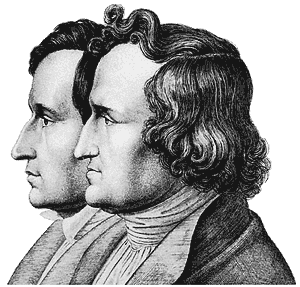The basic story of the girl who rises from a lowly servant to marry a prince is one that is widespread in world literature and which has been traced back to as early as AD 850 in a Chinese tale (Grimm, Grimm, Tatar & Byatt, 2004). The enduring interest in the story is evident in the many film versions, from Disney's animated Cinderella (1950) through Ella Enchanted, (2004) to the new Disney Cinderella (2015) directed by Kenneth Branagh. The source of Grimms ' version of the story is unclear. It's thought that the original 1812 version came from a woman in a nursing home in Marburg (Rölleke, 1975). For the 1819 edition, motifs from several other collected stories of the Hessian region were merged into the story, namely the father's gift of a twig and the episodes on the mother ' s grave.
The story remains one of the most popular in the collection. It's classified as a Zauberm ärchen (tale of magic), as Cinderella receives magical help to fulfill the tasks assigned by the stepmother and stepsisters, as well as to be able to attend the ball. Despite the fact that Cinderella willingly carries out the duties assigned her, she earns only scorn from her stepfamily. Her kindness to animals and to others gains prominence throughout the Brothers ' editions of the tales, so that by the final version during their lifetime (1857), she appears as a prototype of middle-class female virtues (Uther, 2013). However, in contrast to Disney's passive heroine, Grimms ' Cinderella takes her fate into her own hands, leaving the ball on her own by foot and finding by herself ways to hide from pursuit.
For those familiar with the story from the Disney film, the most surprising aspect of the Grimms ' version is undoubtedly the violent episodes surrounding the stepsisters, who cut off parts of their feet to try to convince the prince that each is the sought glass slipper wearer and who in the end have their eyes pecked out by doves. The slipper test was traced back by Jakob Grimm (1899) to a Germanic betrothal ritual of putting on and taking off shoes. Lutz Röhrich (2001) has pointed out that still today in some Eastern European cultures, a bride ' s shoes are removed (usually by the bridegroom) before the ceremony.
Story Classification
KHM 21 Kinder- und Hausmärchen numberATU 510A: Cinderella Aarne-Thompson-Uther international folk tale classification type
Film versions
- Aschenputtel-Scherenschnittfilm, 1922 (Lotte Reiniger ' s silhouette animation)
- Cinderella, 1950 (Disney)
- Drei Haselnüsse für Aschenbrödel, 1973 (Czech-German production)
- Ashpet: An American Cinderella, 1990 (features African-American storyteller, Louise Anderson)
- Ever After, 1998 (starring Drew Barrymore)
- Confessions of an Ugly Stepsister, 2002
- Ella Enchanted, 2004 (starring Anne Hathaway)
- Elle: A Modern Cinderella Tale, 2010
- Cinderella, 2015 (directed by Kenneth Branagh)
References
Grimm, J.(1899), Deutsche Reichsalthertümer, Leibzig.
Rölleke, H (1975), Die älteste Märchensammlung der Brüder Grimm. Synopse der handschriftlichen Urfassung von 1810 und der Erstdrucke von 1812, Cology-Geneva
Grimm W, Grimm J, Tatar M, & Byatt A. (2004), The Annotated Brothers Grimm, New York
Lutz R. (2001), Märchen und Wirklichkeit. Eine volkskundliche Untersuchung, Baltmannsweiler.
Uther, H-J (2013), Handbuch zu den "Kinder- und Hausmärchen" der Brüder Grimm. Entstehung - Wirkung - Interpretation. Berlin.


